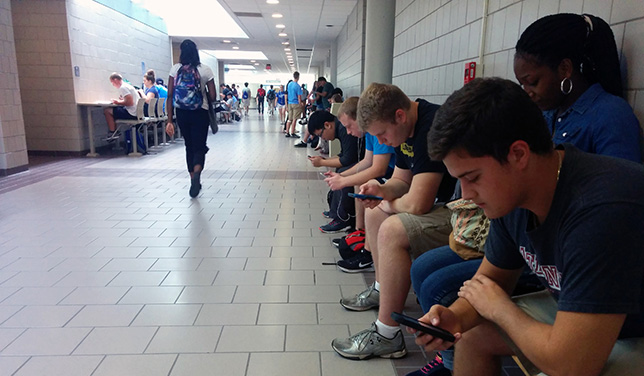University at Buffalo Upgrades to Gigabit WiFi

Photo: Business Wire
A new gigabit wireless network is delivering high-speed WiFi to students, faculty and administrators at the University at Buffalo, the largest institution in the State University of New York system. The coverage, based on technology from Aruba, will extend across all three UB campuses, totaling 150 buildings (academic, administrative and residence halls) and 10 million square feet.
User expectations for ubiquitous wireless were a key driver behind the upgrade. "When UB first deployed wireless in 2000, it was one of those nice-to-have things," said Brice Bible, vice president and chief information officer for the university, in a statement. "WiFi was cool, but if it didn't work, it wasn't a big deal. Now customer expectations have shifted and regardless of the location, application or type of customer, everyone considers wireless critical. It has to work 100 percent of the time, no exceptions."
Other contributing factors included the expansion of hybrid and online courses; students' need to access videos and recorded lectures; the growing use of in-classroom learning applications; and the number and variety of mobile devices students bring to their residence halls.
The new network is built on a combination of Aruba 802.11ac Wave 1 and Wave 2 access points, Aruba's 7000 Series Mobility Controllers, Aruba AirWave for network management and Aruba ClearPass for policy management and guest access. UB is installing approximately 6,000 access points over three years; 3,500 of those are already in place, with the project slated for completion this fall.
In particular, ClearPass will help the university drive registration of all devices on the network, giving administrators more control over authentication and management of connected devices as well as better insight into network use, according to a news release.
"We're using ClearPass Guest to create a guest's active account, but more importantly, we're using it as a way to automatically drive customers to register all of their personal devices," Bible explained. "These devices then reside on the Guest side of the house. The ClearPass Policy Manager also delivers insights and profiling capabilities used for visibility, planning and troubleshooting."
ClearPass has also helped the university condense its SSIDs from five or six down to three, with the ultimate goal to have one for 802.1X and one for everything else, according to Jerry Bucklaew, network architect with UB Information Technology. It will also help with streamlining the device registration and authentication process.
"Our two biggest types of devices are APs and IP phones on our wired network, but with 6,000 of the former and 10,000 of the latter, we didn't want each one of them to be specifically registered," said Bucklaew. "Using profiling, we can determine if a device is an AP or a phone, then apply the appropriate policies in real time, so we can avoid individually registering these 16,000 devices. We can then continue to require registration and authentication of all other devices on wired and WiFi, which will become even more useful as we see more IoT devices on the network."
Response to the upgrade has been positive. "With our new network, we're seeing utilization through the roof and the complaints we used to see coming in from the website, social media postings and calls into support have declined rapidly," said Bible. And student surveys have found that "residence halls equipped with the new WiFi infrastructure have seen a 21 percent increase in satisfaction as compared to those still utilizing the legacy network," according to the news release.
Next steps for the university include exploring mobile engagement for location-based services; expanding coverage to outdoor campus areas; fine-tuning the use of ClearPass on the wired network; increasing the scanning and profiling of devices in preparation for the Internet of Things; and more.
About the Author
Rhea Kelly is editor in chief for Campus Technology, THE Journal, and Spaces4Learning. She can be reached at [email protected].